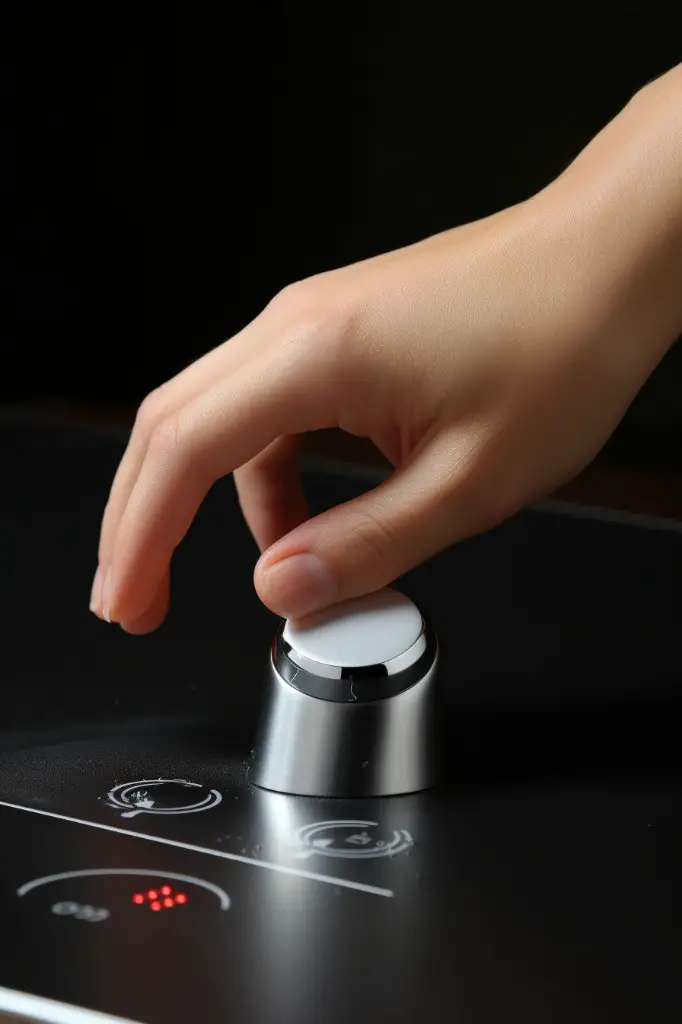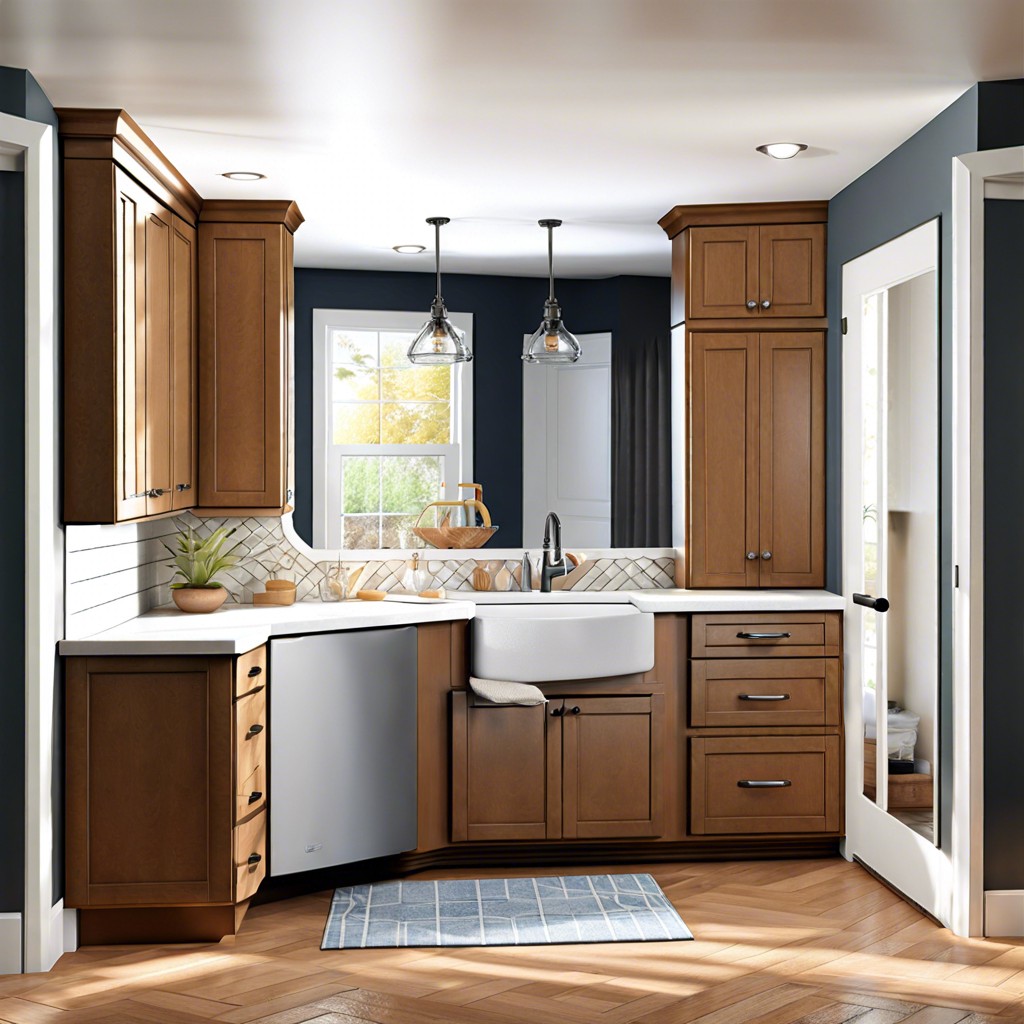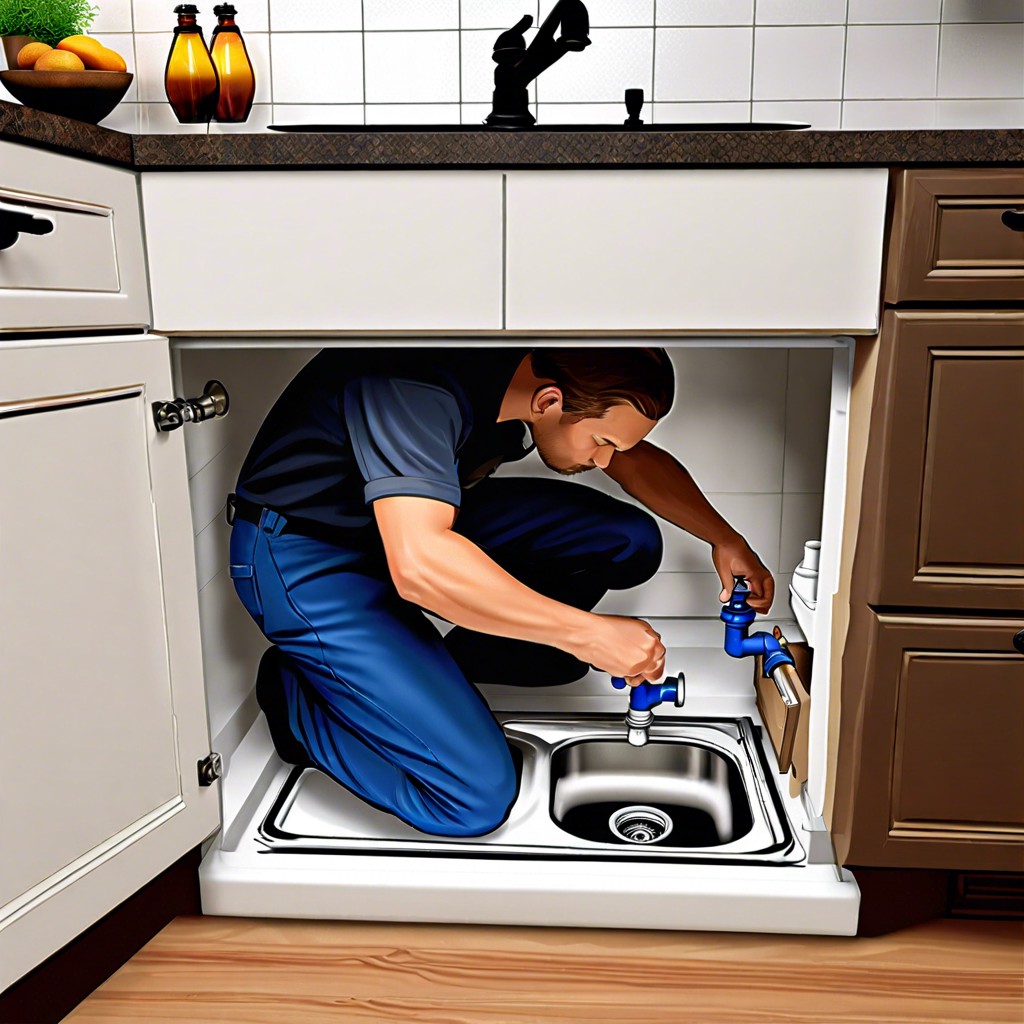Last updated on
Dive into this exploration of solutions to a troublesome single handle kitchen faucet dispensing no cold water because the best fix might be simpler than you think!
These are my unique design concepts made using design tools. I hope you find them inspiring!
Welcome to the world of single handle kitchen faucets. Whether your cup of tea is hot or cold, these faucets should do the trick.
But what happens when the cold water refuses to run? You’ve likely stumbled upon countless solutions online, but let’s take a fresh approach.
This compilation of unique ideas will not just provide you with out-of-the-box solutions but will also breathe new life into your precious kitchen tool.
While valuable resources for tried-and-tested ideas are arranged for you at the conclusion, the objective here is to unleash fresh innovative ideas from various perspectives, giving you the upper hand in tackling the issue.
So, lean in, because this unique list is set to revolutionize your single handle kitchen faucet experience.
What's Inside
Temporary Fixes for Lack of Cold Water in a Faucet
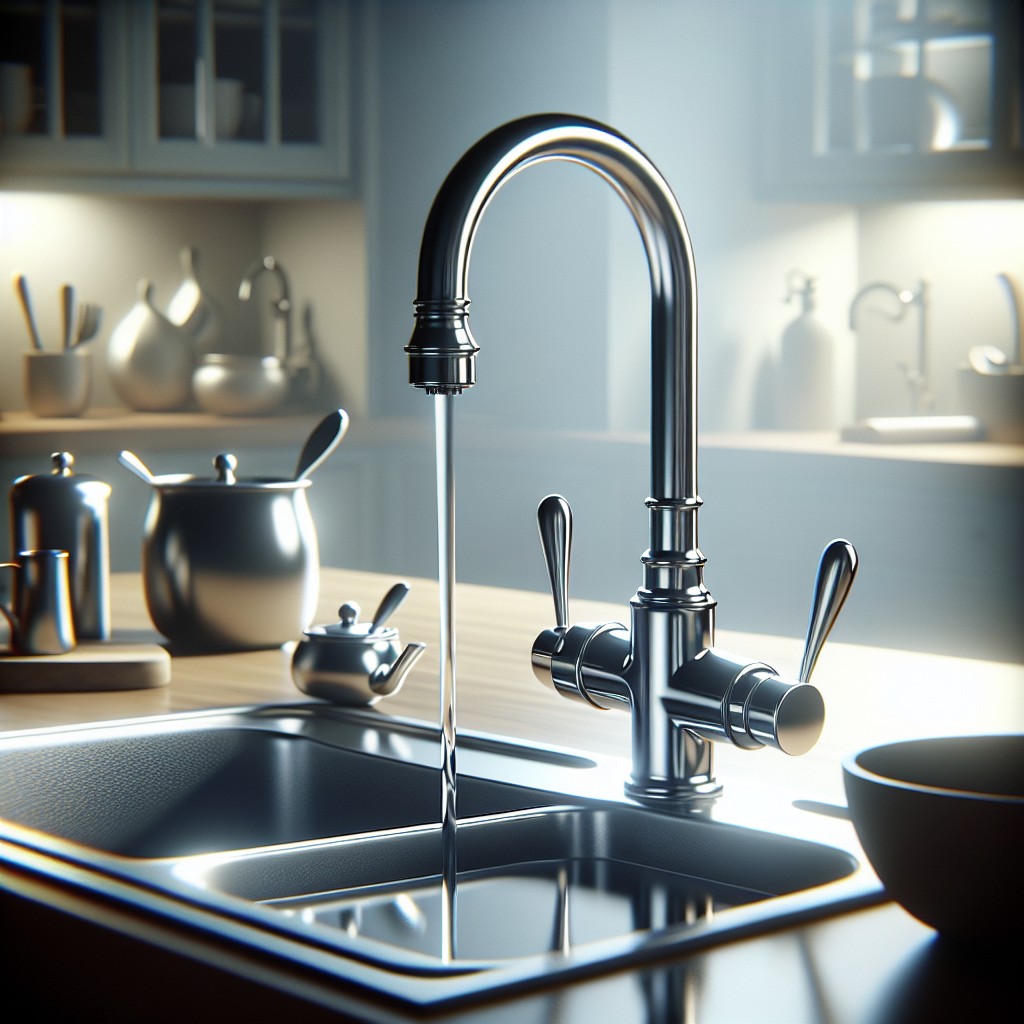
You may find a few handy, temporary solutions to regain cool water flow. Start by checking if the shutoff valve is fully open; this is commonly located under the sink. An obstruction in the faucet or supply line could also be the culprit, which can be resolved by cleaning the aerator or flushing the line.
Meanwhile, you may test the balance pressure valve by adjusting it to regulate the water temperature. Nonetheless, if all else fails, a complete cartridge replacement can offer a quick fix for the problem until more permanent solutions can be applied. Remember, these are short-term remedies. Deeper issues might require professional assistance or even replacement of the faucet. Each faucet and installation can have unique characteristics, so solutions can vary.
Dealing With a Faulty Temperature Control Valve
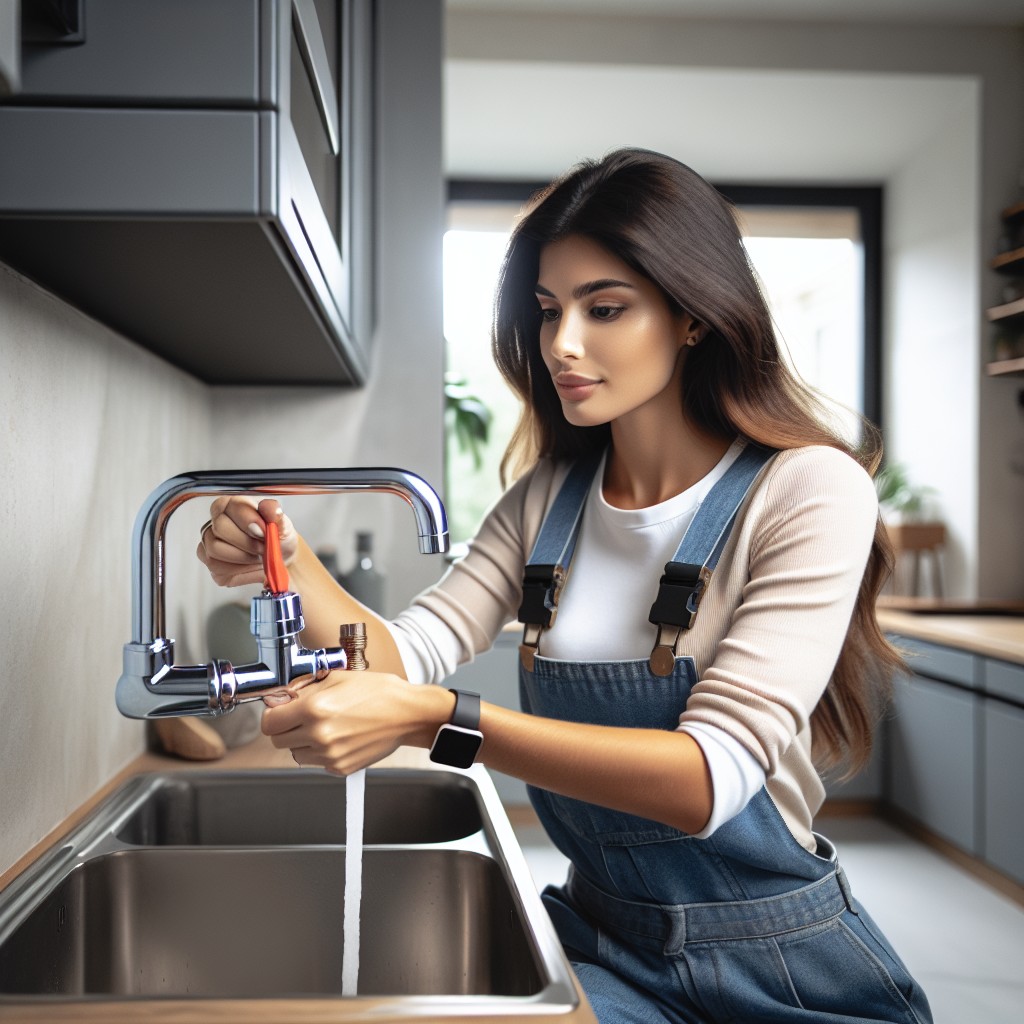
When dealing with a faulty temperature control valve, there are a variety of points to keep in mind. First, understand that this valve regulates the mixture of hot and cold water flowing out of your faucet. When it’s not working correctly, it could block the cold water entirely.
To correct this, you’ll first need to locate the valve. It’s usually found underneath the sink or at the base of the faucet and might require a simple adjustment to restore proper function. Tools like a wrench or a pair of pliers will often suffice for making these adjustments.
Next, examine the valve for any visible signs of damage or wear. Any cracks, corrosion, or apparent damage could be a sign that it needs replacing.
If you’ve detected no physical damage, it may be a mineral buildup causing the blockage. Use a vinegar solution to dissolve the deposits.
Sometimes problems continue despite these efforts. This scenario signals that it may be necessary to replace the valve completely. While you could do this task yourself, you may also engage the services of a professional to ensure it’s done correctly. Remember, any attempt to manipulate plumbing should be done with utmost caution to prevent further damage or issues.
Maintenance Tips to Avoid No Cold Water Issues
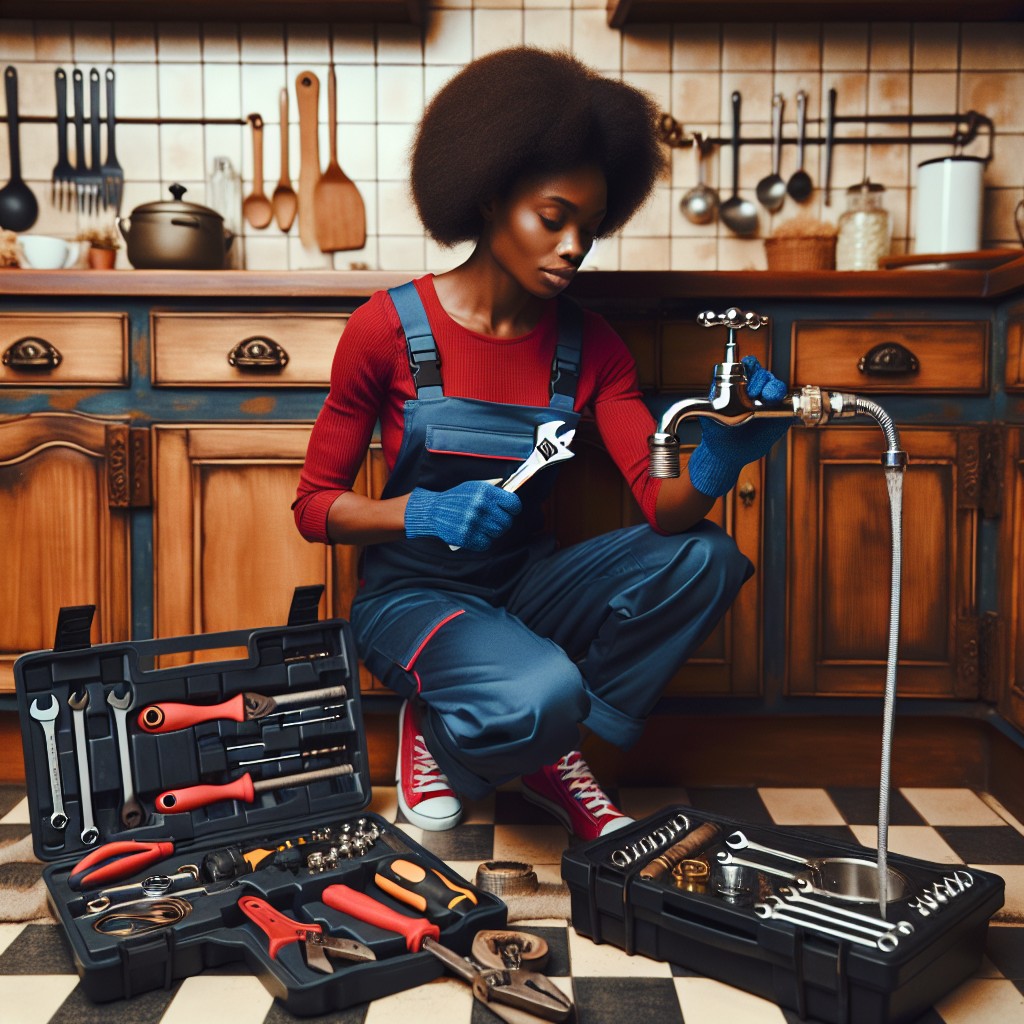
Regular maintenance can save you from unwelcome surprises like sudden loss of cold water in your kitchen faucet.
1. Periodical Checkups: Routine inspections can identify potential issues early on. Check for leaks or temperature inconsistencies every few weeks to keep your faucet in top condition.
2. Clean Your Faucet: Over time, mineral deposits can accumulate within your faucet, inhibiting water flow. Make sure to routinely clean the interior components to prevent such issues.
3. Replace Worn-Out Parts: Attention to wear and tear is crucial. If you spot corrosion or degradation in any component, it’s best to replace it immediately.
4. Monitor Water Pressure: High water pressure can strain the faucet, leading to failures. Keep the water pressure within recommended limits.
5. Check the Mixing Valve: This valve controls the balance of hot and cold water. Ensure it’s not faulty, as it often causes temperature issues.
6. Inspect Supply Lines: Examine the water supply lines for blockages, leaks or corrosion as they can impact the temperature of the water supply.
Remember, while these steps can significantly extend the lifespan of your faucet, they’re not foolproof. There will still be times when professional assistance is necessary.
Quick DIY Fixes for Faucet With No Cold Water
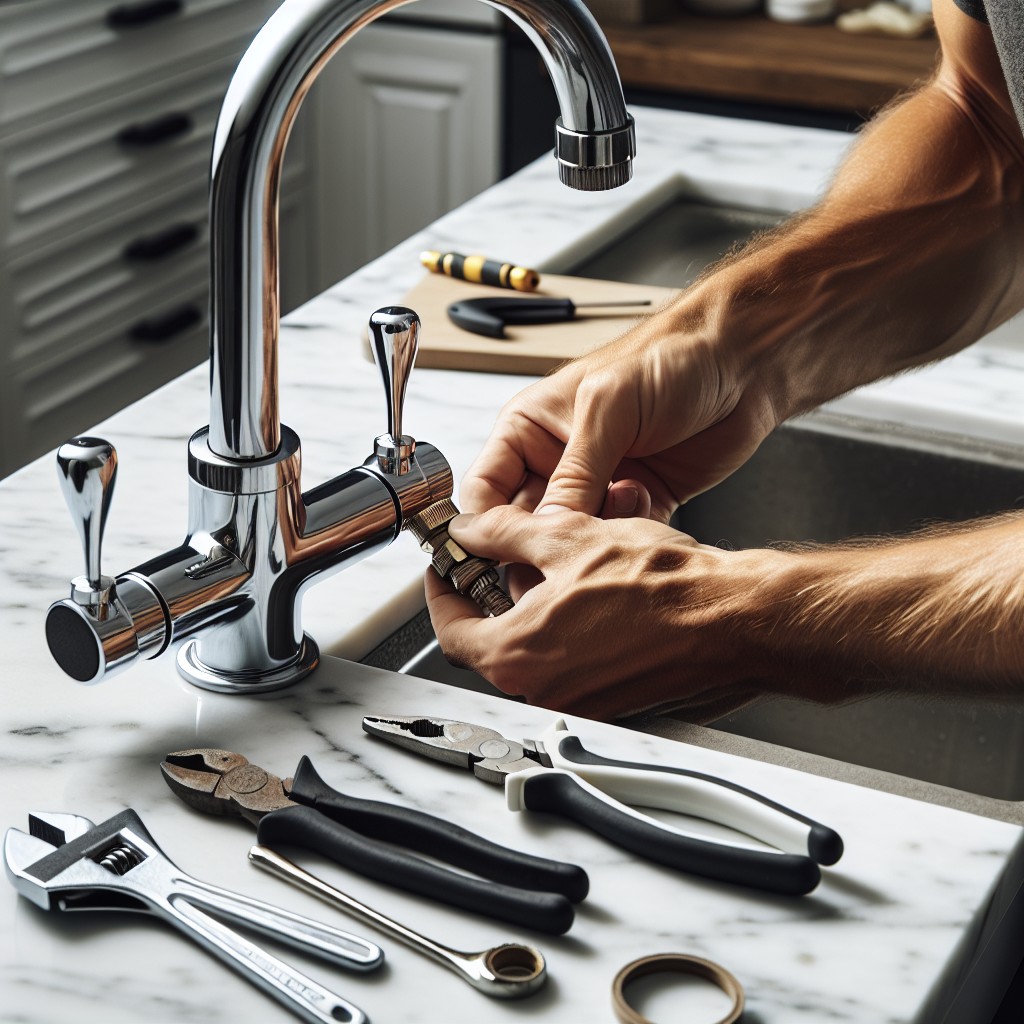
Getting cold water flowing again from your faucet might not require a professional, and can be achieved through a few simple steps:
1. Check supply valves: Locate these behind the sink’s cabinet, ensuring they’re fully open. If not, give it a good clockwise twist.
2. Inspect the cartridge: Worn-out cartridges may fail to mix hot and cold water properly. To examine it, take off the faucet handle, remove the cartridge, and look for signs of damage or wear.
3. Clear faucet’s aerator: Over time, mineral deposits block the aerator mesh, affecting the water flow. Unscrew the aerator, clean it, and reattach it to the faucet.
4. Adjust the faucet’s control valve: Found below the faucet handle, improper adjustment may cause temperature issues. After removing the handle, modify the positioning of the valve until there’s a balanced flow of hot and cold water.
Remember, always turn off the water supply before starting any DIY fixes to prevent any unwanted water flow. Lastly, for parts like cartridges, consult your faucet’s manufacturer for specific instructions or purchase of replacement parts if required.
Understanding Your Faucet’s Mixing Valve
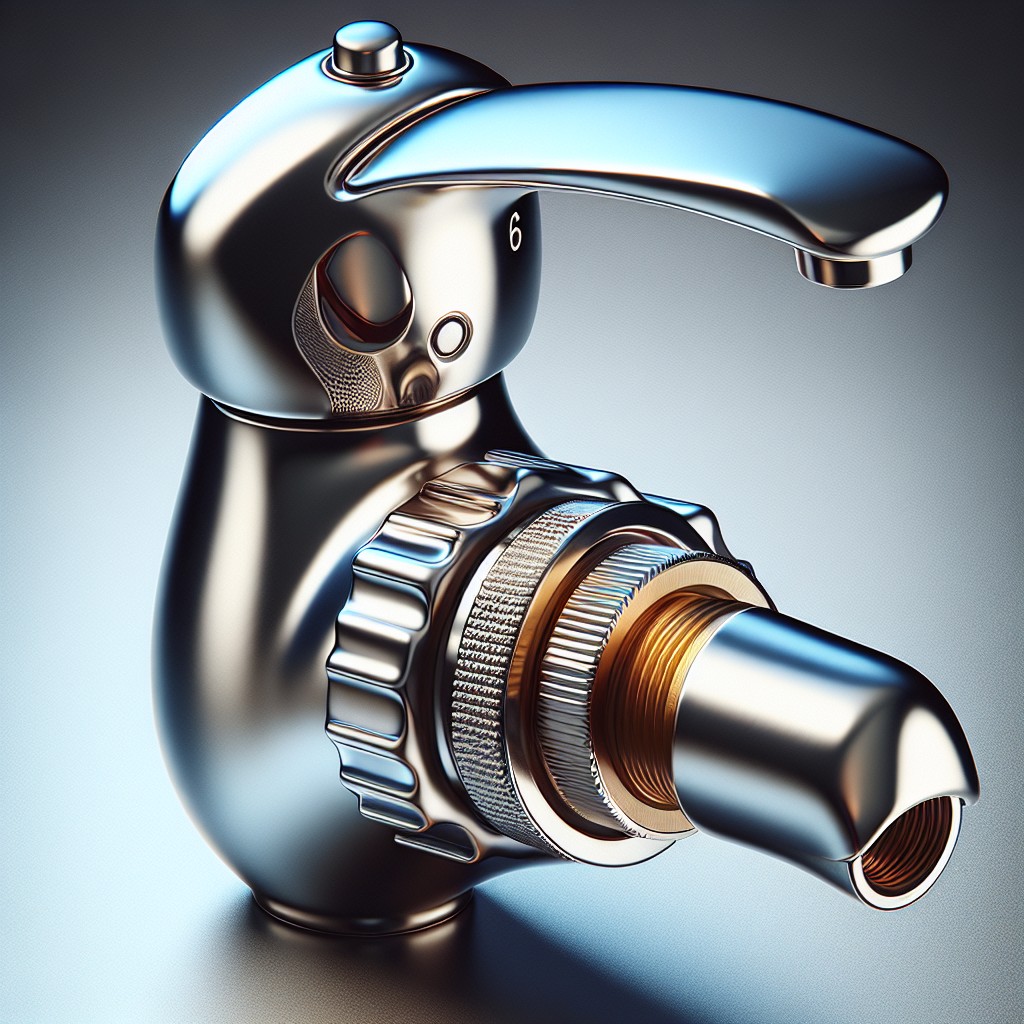
The mixing valve plays a pivotal role in regulating the temperature of water flowing through your faucet. In most single handle kitchen faucets, this valve is found within the cartridge. It controls the blend of hot and cold water, based on the position of the handle when you turn on the faucet.
Now, if there’s a problem with the cold water, it could be because the mixing valve is not opening correctly to let in the cold water. This could be due to a mechanical failure, a foreign object blocking the valve, or issues with the alignment. As a result, you only get warm or hot water, even if the handle is turned towards the cold side.
Regular maintenance of the mixing valve can save you from the inconvenience of having cold water emergencies. Cleaning it periodically, especially in regions with hard water, could dislodge any mineral deposits or obstructions. Additionally, ensuring the cartridge which houses it is in good working condition also proves beneficial.
A severely damaged mixing valve may require a replacement. Make sure you pick the right type compatible with your kitchen faucet model. But remember, failing to install the new valve correctly might result in the same problem, or cause a break in your water line. Don’t hesitate to bring in a professional, if in doubt.
Single Handle Faucet Problems: No Cold Water
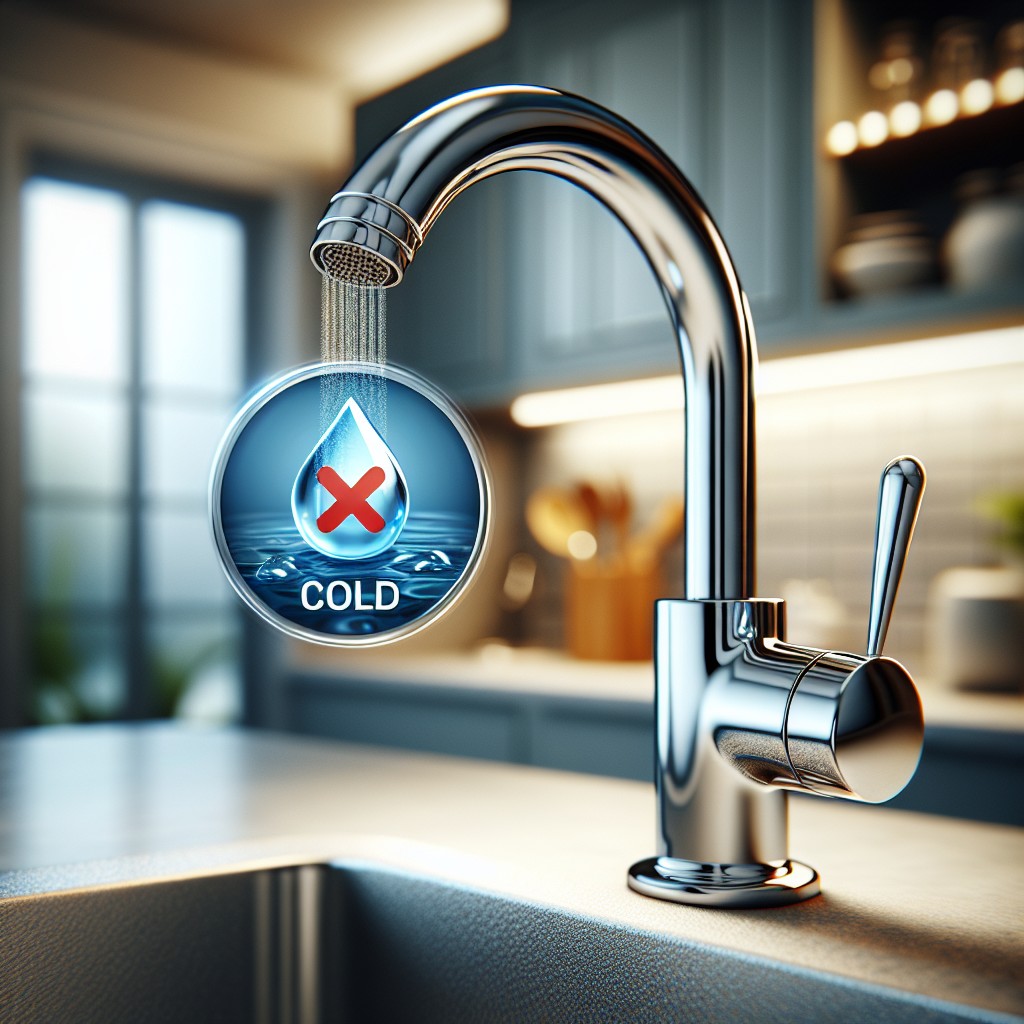
In most instances, the absence of cold water can be attributed to the incorrect settings of the control valve, blockages within the supply line, or an issue with the faucet cartridge. If you encounter this problem:
1. Check your control valve: The control valve balances cold and hot water. If it malfunctions, it may prevent cold water from flowing. If your valve is impeded or damaged, arranging for its repair or replacement is vital.
2. Look for blockages: Blockages in the cold water line can prevent cold water from reaching your faucet. A simple cleaning or replacement of the supply line often resolves this issue.
3. Inspect the cartridge: Faucets largely rely on cartridges for balancing water temperature. A defective cartridge could cut off the cold water supply. Testing and replacing the cartridge if necessary should rectify the problem.
Remember, working on plumbing fixtures can sometimes be tricky. Consider seeking professional assistance if you’re uncertain about performing these checks yourself to avoid further complications.
How to Inspect a Defective Cartridge in a Faucet
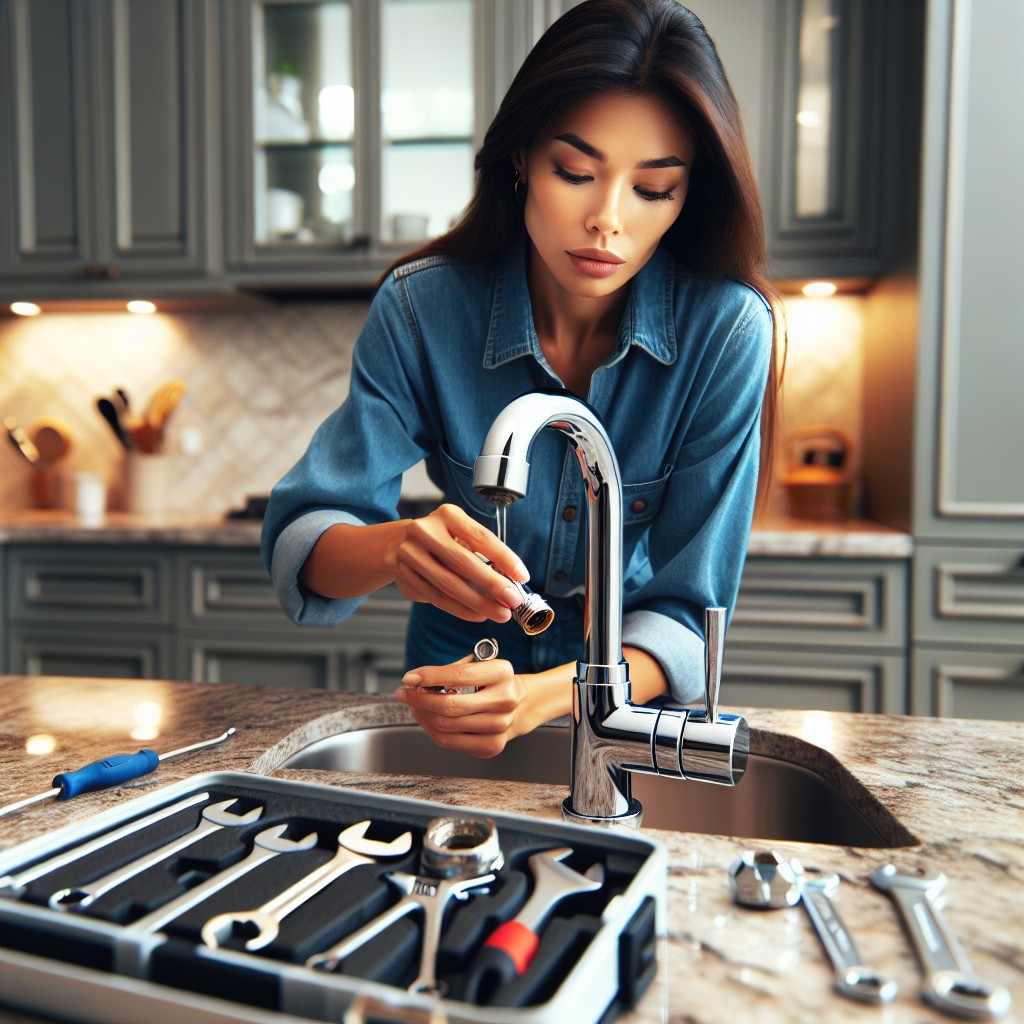
Begin the inspection by switching off the water supply at the shut-off valve under your sink. Next, you’ll want to carefully remove the handle of the faucet along with the outer components. You’ll find the cartridge nestled within, a pivotal device controlling water flow and temperature.
The first step in examining the cartridge is a visual check. Look out for obvious signs of damage like cracks or breaks. If that doesn’t reveal anything, proceed with cleaning. Use a mild, non-abrasive detergent and a soft cloth to clean all parts of the cartridge.
Next comes performance testing. Reinsert the cartridge, turn the water back on, and check the water temperature. Is the cold water flowing again? If not, you may need to replace the cartridge entirely.
Always remember to document or photograph each step as you dismantle the faucet. This ensures an error-free reassembly process. Plus, safety first! Always wear appropriate protective gear when working with your faucet’s internal components. A little precaution goes a long way in maintaining the longevity of your kitchen fixtures.
How to Isolate the Problem of No Cold Water in Your Faucet
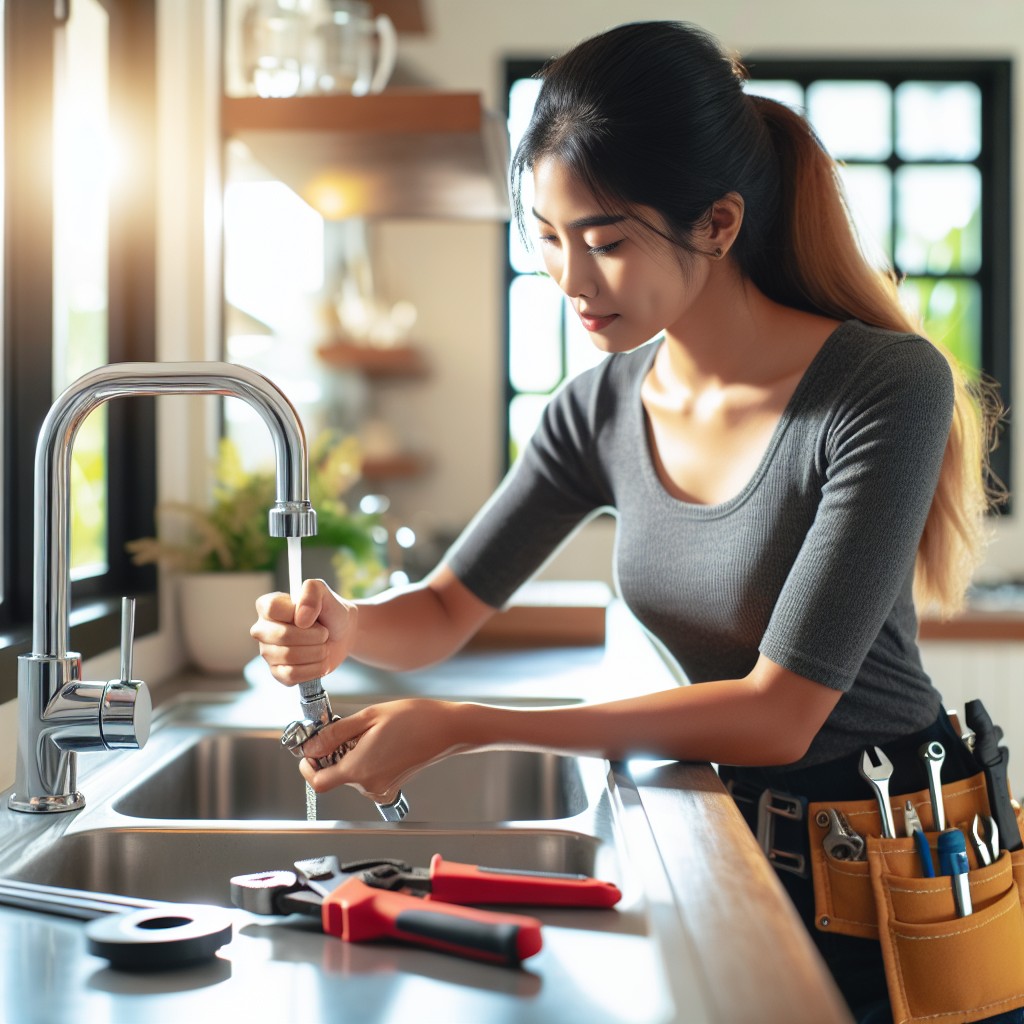
Commencing your isolation journey, follow these simple pointers:
First, verify if the issue is unique to the particular faucet or globally affecting other water outlets. Check bathroom taps, garden hoses, showers, and other installed faucets. Should the problem extend to these areas, you might be facing a whole-house issue.
Moving forward, test both hot and cold water supply valves found beneath the sink, as your cold water supply valve may be partially or completely closed. Opening the valve fully should resolve the issue.
Also, a blockage in your faucet cartridge could be the culprit. The cartridge modulates water flow, any impediment means compromising cold water supply. A simple cleaning or replacement might be necessary.
Lastly, cross-examine the water supply lines. Twist and kinked lines could be hampering cold water flow; a straight-out replacement is often advantageous in such cases. Remember, before diving into any DIY, ensure your mains water supply is switched off.
The Role of Pressure-balance Valves in Regulating Water Temperature

Pressure-balance valves function as a governor for your faucet’s water temperature. They adjust the pressure of the hot and cold water that mix together in the faucet. When functioning correctly, these valves respond to changes in water pressure to maintain a constant water temperature.
Here are some key points to understand their operation:
- 1. These valves adjust based on changes in water pressure on either the hot or cold side.
- 2. A drop in cold water pressure, possibly due to flushing a toilet or running a washing machine, causes the valve to reduce the hot water pressure to maintain a constant temperature.
- 3. On the contrary, if the hot water pressure decreases, the valve reduces the pressure of the cold water.
- 4. These valves are especially vital in preventing scalding or sudden cold water shocks.
- 5. In case of no cold water from your faucet, a defective pressure-balance valve could be the culprit.
In essence, these valves serve to balance the water pressure, ensuring a consistent and comfortable water temperature from your faucet.
The Impact of Improper Faucet Setting On Water Temperature
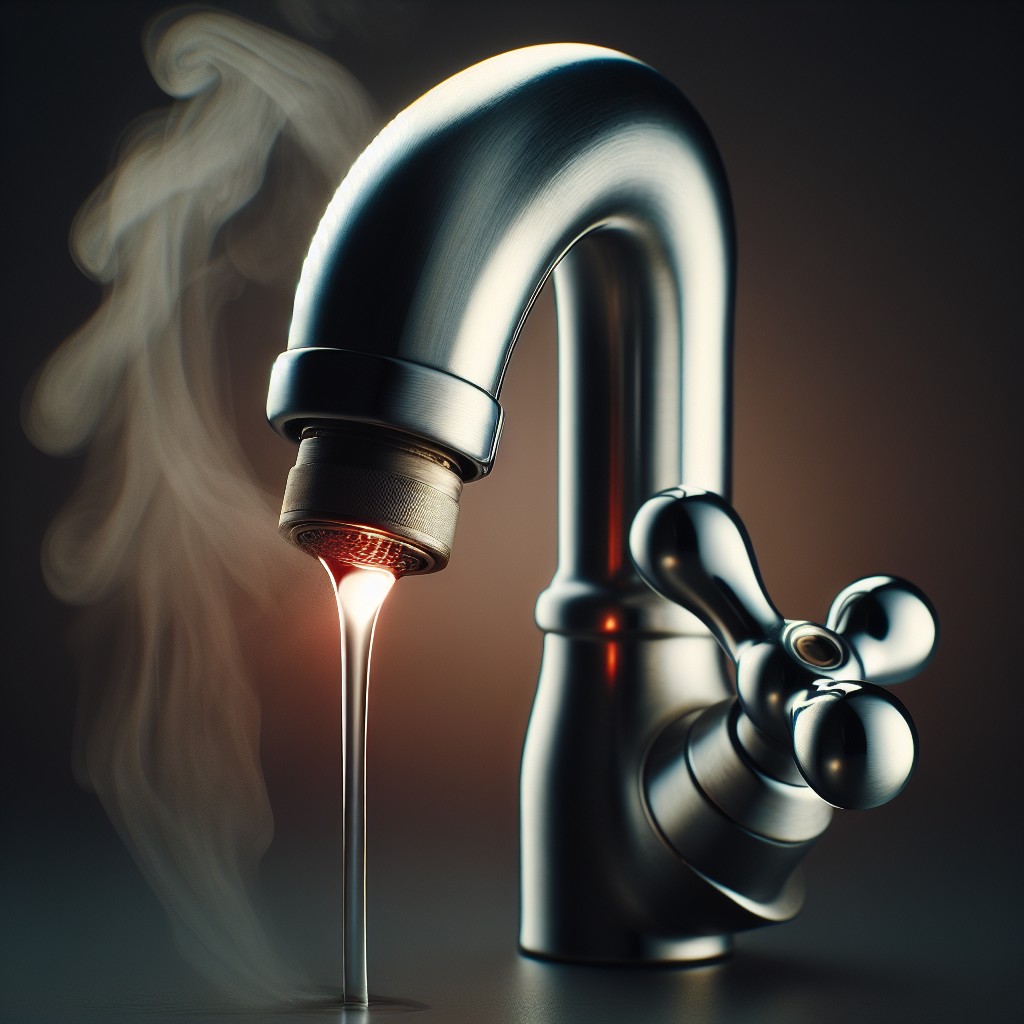
Single handle faucets rely heavily on optimal settings for proper temperature regulation. It’s a common issue where an incorrect setup can skew the cold and hot water balance.
Here are a few points to keep in mind:
- 1. The faucet’s inner workings, specifically the pressure balance unit, must be set up correctly to ensure cold and hot water mix in the right proportions.
- 2. Some faucets are installed with an adjustable rotational limit stop that controls the mix of hot and cold water when you swivel the handle. This needs proper tuning.
- 3. A misaligned balance spool can cause the faucet to deliver only hot water, thus adjustments are needed if that’s the issue.
- 4. You might need to evaluate the valves. A partially closed water valve can affect the temperature.
Remember, while DIY tips are great, it’s always smart to solicit the help of a professional to ensure your faucet setting is correctly done, especially if the problems persist despite your efforts.
Necessity of Professional Help When Facing a No Cold Water Issue
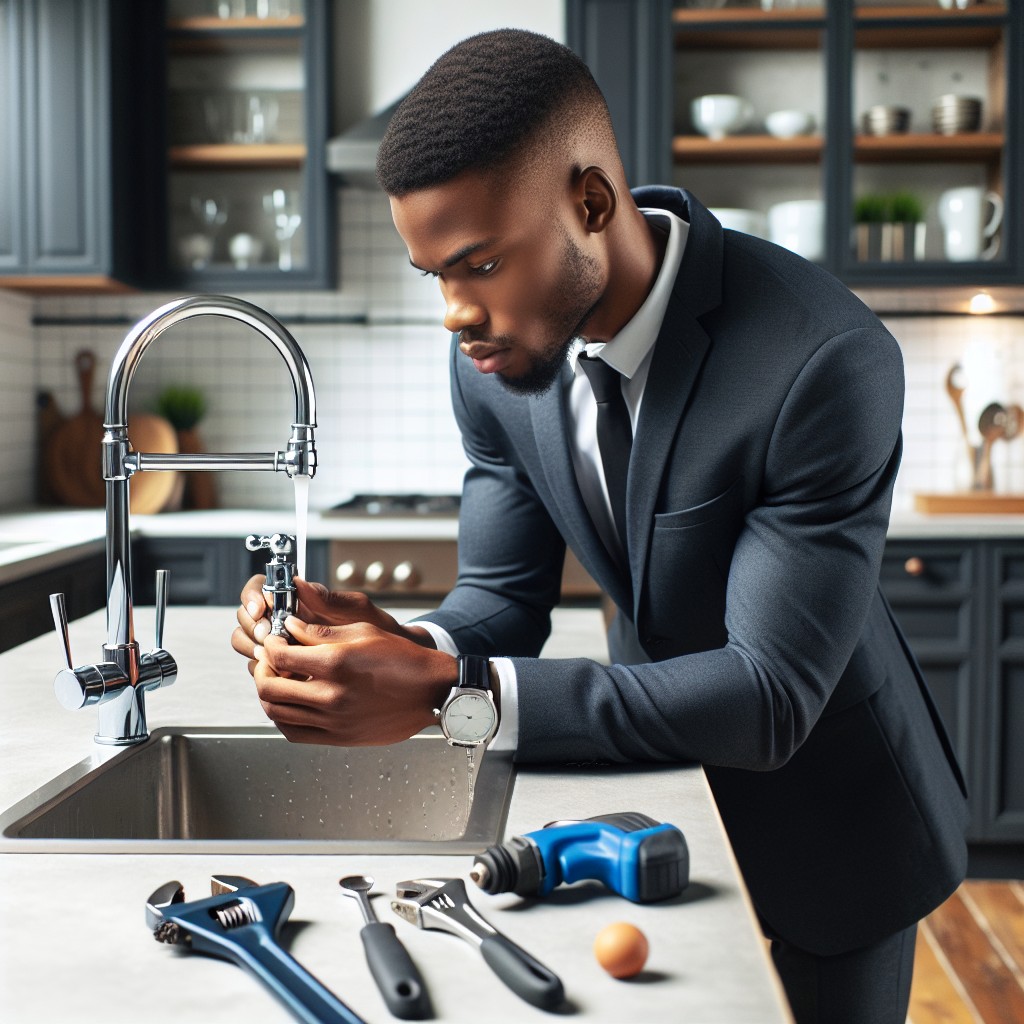
While minor issues might be resolved with DIY methods, sometimes professional help is crucial. Key reasons include:
- Advanced Knowledge: Professionals have the expertise to handle complex problems that could potentially damage your unit or piping system if not appropriately addressed.
- Time Saving: Attempting to fix the problem yourself can be time-consuming especially when lacking necessary experience. Plumbers can identify and rectify the issue swiftly.
- Warranty Compliance: Some faucet warranties stipulate that only certified plumbers can perform repairs. Attempting to DIY could void your warranty.
- Tools: Professionals have a range of specialist equipment not usually found in a typical homeowner toolbox. This expert toolset is often necessary for comprehensive faucet repairs.
- Long-Term Solution: A professional can ensure a long-term solution whereas DIY fix might be a temporary respite.
- Safety: In case of severe blockage or leakage, tinkering without professional know-how can invite accidents. Plumbers are trained to operate safely, reducing these risks.
Remember, it’s always a smart move to consider the extent of a problem before embarking on a DIY journey.
Essential Tools to Fix a No Cold Water Problem
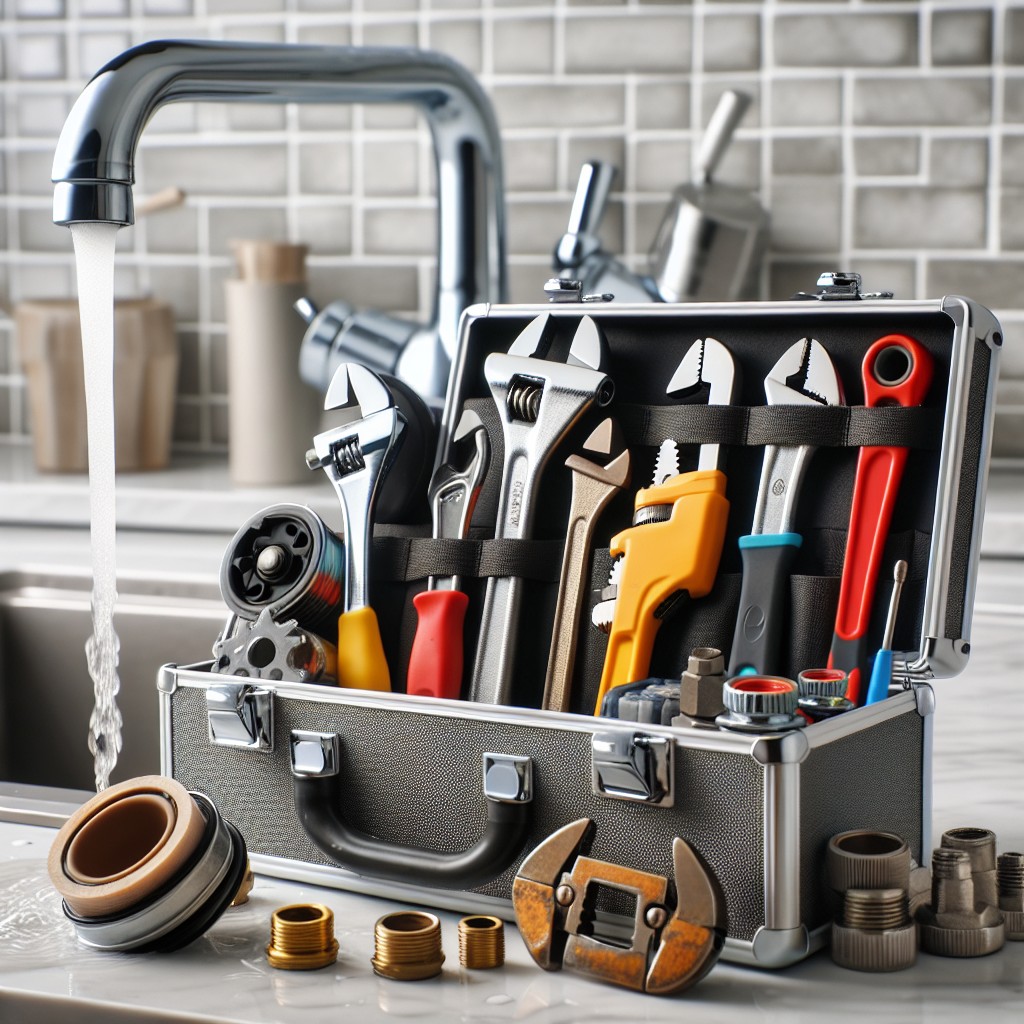
Equipping yourself with the right tools is paramount to troubleshooting and potentially rectifying the issue. A basic plumber’s toolkit should suffice for most issues. Key items include an adjustable wrench, a set of screwdrivers, and a plier.
For more specific tasks, you might need a valve socket wrench to adjust the shower valve stems. In cases where the water line might be blocked, a handheld snake or auger comes in handy.
Additionally, seal tape is particularly important to ensure leak-proof joins when assembling back the faucet. Lastly, have a flashlight available. It’s crucial for viewing shadowy areas beneath the sink or inside the faucet body.
Remember, using the right tool for the right job not only increases efficiency but also prevents further damage to your faucet.
Understanding Your Faucet’s Mechanical Setup to Identify Cold Water Issues

Delving into the heart of your kitchen faucet, it’s essentially a mechanical system consisting of various components. Each of these components performs vital tasks to regulate the flow and temperature of the water. Understanding these components can help identify and fix cold water issues.
First up, the valve seat. It’s the interface between the faucet and the spout, preventing water from dripping out of the faucet when it’s off. If it’s damaged or corroded, it could affect the water temperature.
Another critical component is the cartridge, which controls the water flow and temperature. If malfunctioning, it can cause the absence of cold water.
A mixing valve installed in most single handle faucets blends hot and cold water together. Problems with the mixing valve can lead to a lack of cold water.
Lastly, the aerator installed at the end of the faucet might be blocked or faulty. It can interfere with the temperature of water coming out, causing an absence of cold water.
Recognizing these faucet components’ roles is crucial in diagnosing and resolving any cold water issues in your single handle kitchen faucet.
Exploring Other Alternatives When Facing No Cold Water Dilemma
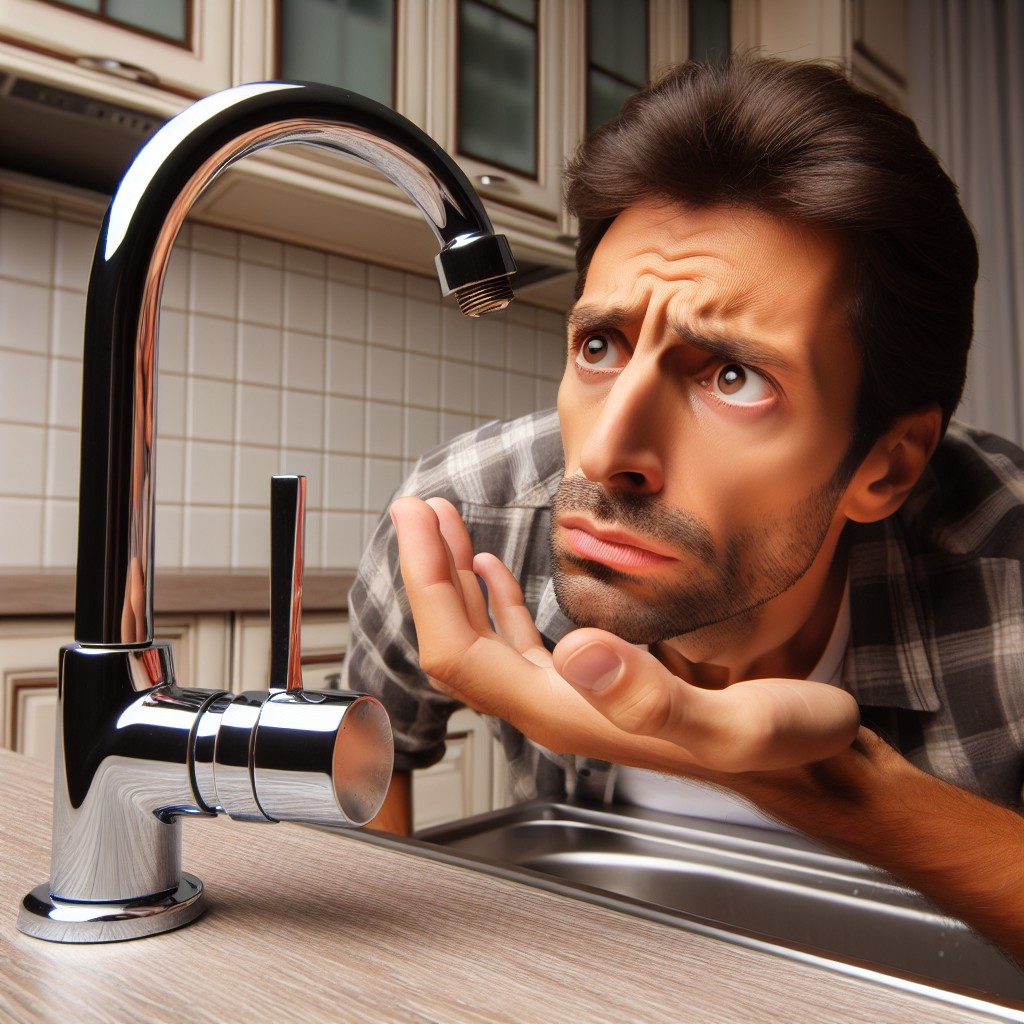
If the simple fixes aren’t working to solve the cold water issue with your faucet, it might be time to consider some alternative options:
1. Installation of a new cartridge: This part regulates the water temperature. A malfunctioning cartridge could be the culprit, especially if you’ve had it for a while. A new one could solve the issue and also extend the overall lifespan of your faucet.
2. Consider a Faucet Upgrade: If your faucet is outdated or advanced in age, the issue could be a result of a worn-out system. Upgrading to a new model might be an effective solution, and it will also offer an updated look to your kitchen.
3. Professional Help: Sometimes, it becomes essential to hire a plumbing expert. They possess specialized tools and expertise to identify and fix the issue in the most reliable way.
4. Thermostatic Mixing Valve: Installation of a thermostatic mixing valve could be another practical solution. A TMV blends hot water with cold water to ensure consistent, safe shower and bath outlet temperatures preventing scalding.
Remember, it’s crucial to pick the alternative that best suits your situation based on the faucet’s model, age, and your budget. Any of the listed alternatives could be the ideal solution to reinstate the cold water flow in your kitchen faucet. It’s about finding what works best for your specific situation.
Cost-effective Solutions for a Single Handle Faucet With No Cold Water
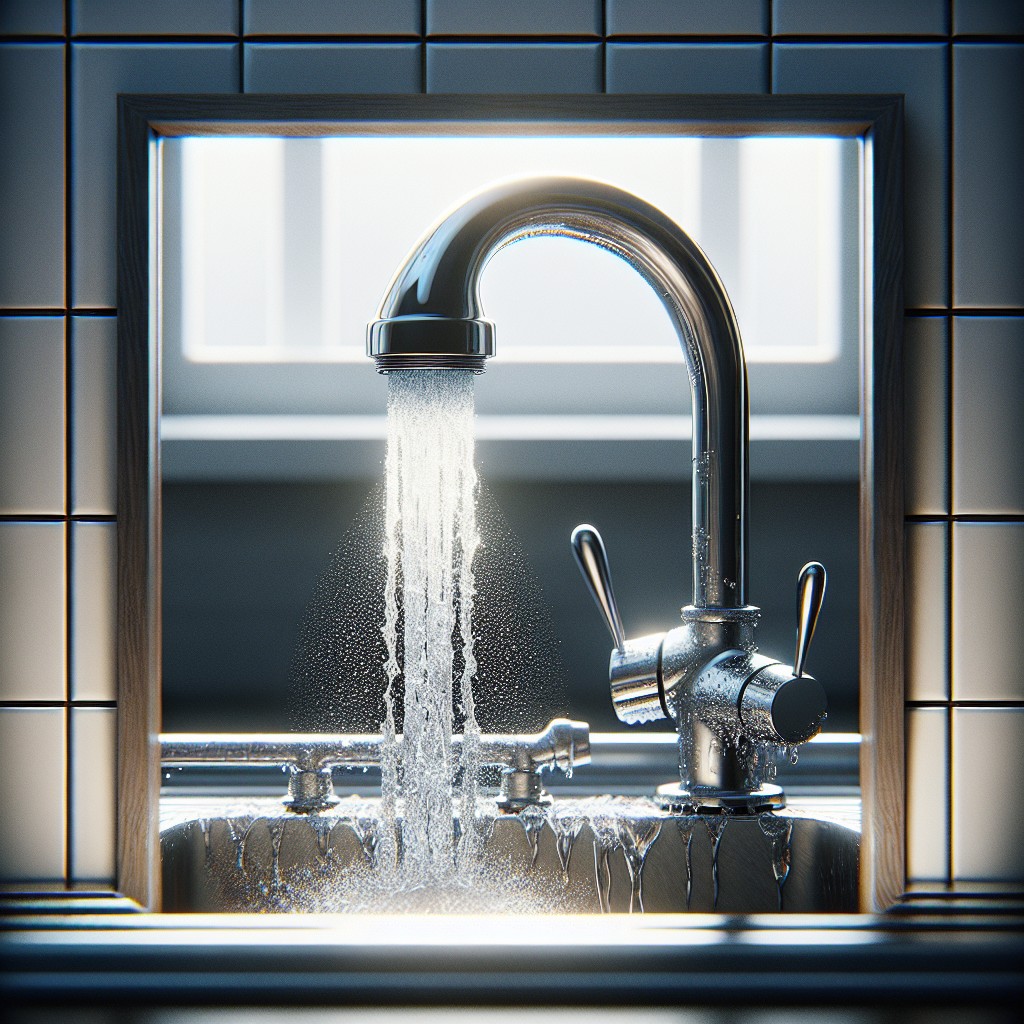
Getting your faucet back to normal operation doesn’t have to break the bank. Here are some cost-friendly strategies:
1. Replace the Handle: Sometimes, a damaged faucet handle can disrupt the flow of cold water. Thankfully, replacement handles are affordable and easy to install, saving you both time and expense.
2. Clean the Cartridge: The cartridge allows water to flow through your faucet. If the cartridge becomes blocked with debris, the cold water might get cut off. Cleaning the cartridge, rather than replacing it, is an inexpensive solution.
3. Install a New Mixer Valve: A troubled mixer valve can lead to temperature issues. If this is the case, replacing the valve should rectify the problem. Compare prices to find the best deal, but remember not to compromise on quality.
4. Call a Plumber: It might seem counterintuitive, but sometimes hiring a professional can be cost-effective in the long run. They can pinpoint the problem and make necessary repairs quickly and efficiently, ultimately saving you from pricier fixes down the line.
Remember: effective solutions to any household issue should neither drain your wallet nor waste your time. With a dash of DIY spirit, and help from professionals when needed, you can keep your faucet—and your budget—in good shape.
Top Mistakes Causing the Absence of Cold Water in a Faucet
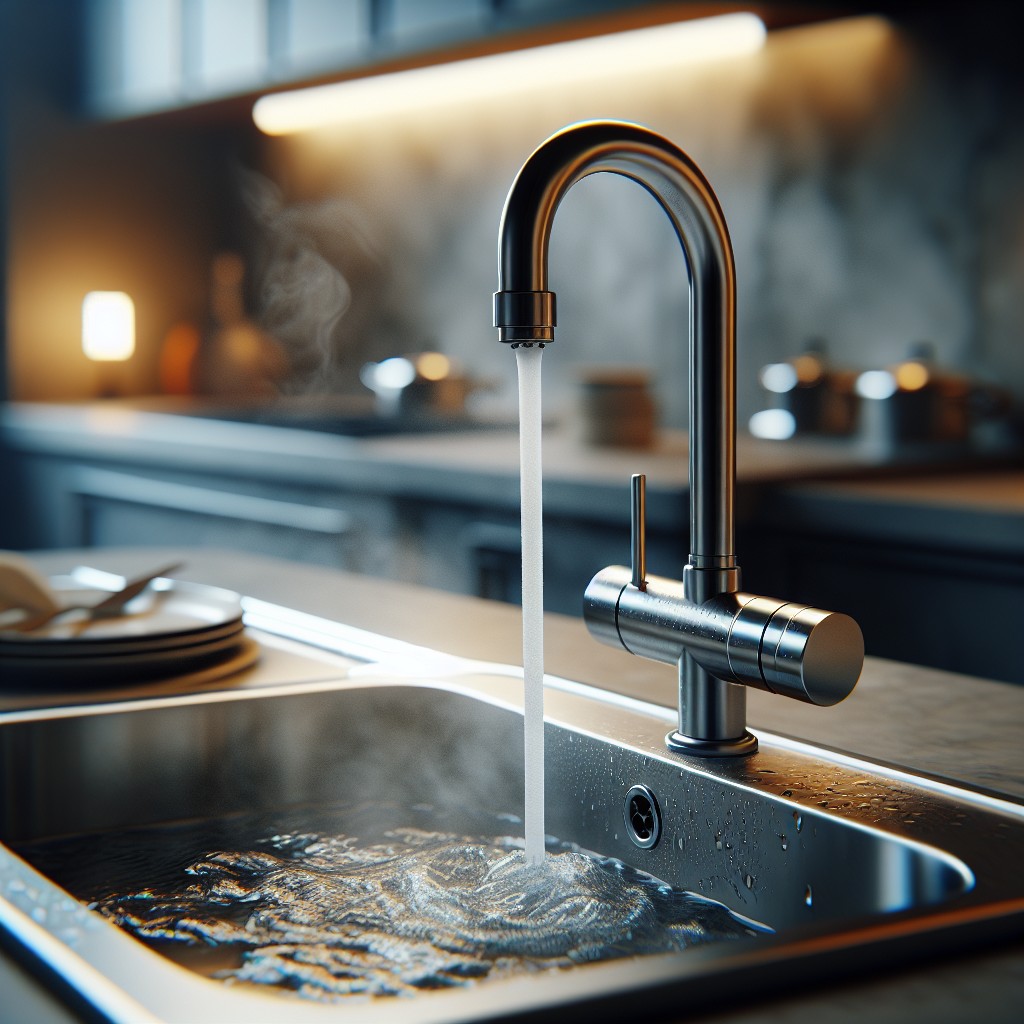
It’s not uncommon to accidentally trigger an issue when trying to fix another. For example, twisting the water supply valve too hard might cause a breakage, leading to an absence of cold water flow.
Similarly, incorrect reassembly of the faucet after repair or cleaning can cause a blockage in the cold water line. Also, using the wrong tools might damage the internal parts such as the cartridge or the mixing valve, leading to a lack of cold water flow.
Another mistake is neglecting regular maintenance, which can lead to build-up and clogs in the pipes. Furthermore, mistakenly setting the temperature control valve to block cold water can also cause the problem.
Finally, installing incompatible faucet models that do not match your plumbing system might cause an imbalance in the hot and cold water mixing, resulting in no cold water.
Steps to Troubleshoot Lack of Cold Water From Your Faucet

Examining the temperature control valve forms a crucial step. This device, often located near the water heater, regulates the blend of hot and cold water. If turned incorrectly, it could significantly affect the water temperature.
Next, inspect the supply lines leading to your kitchen faucet. These lines transport cold and hot water to your sink. Ensure there are no clogs, and the valves are fully open for a free flow of water.
Afterward, shift your attention to the faucet cartridge, the part responsible for controlling water flow and temperature. Over time, it may either wear out or become clogged with mineral deposits, preventing the cold water from flowing freely. Removing and cleaning, or even replacing the cartridge when necessary, can alleviate this problem.
Pressure balancing valves can influence water temperature, and a faulty valve might cause sudden shifts between hot and cold water. Check this component and consider consulting a professional if repairs or replacement are needed.
Last but not least, remember to scrutinize your faucet’s mixing valve. It’s the part that blends hot and cold water, producing a comfortable temperature for your use. If it malfunctions, it can disrupt the cold water supply. Some simple adjustments, cleaning, or replacement can restore your faucet back to its norm.
Do not shy away from seeking the help of a professional plumber if the problem seems too complex. After all, a faulty plumbing system can cause greater harm if left unaddressed.
When to Replace Your Single Handle Faucet Due to No Cold Water Issue
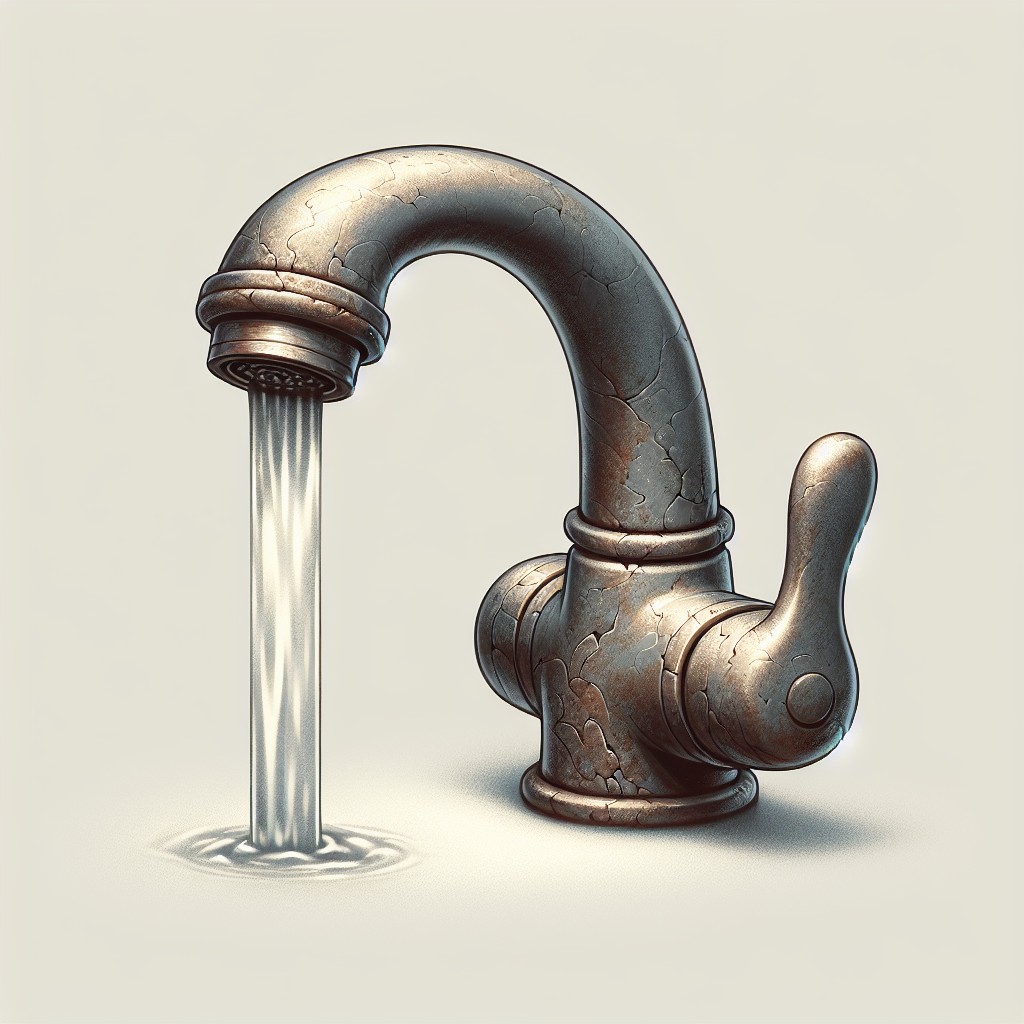
Inspecting your faucet for signs of extreme wear and tear is crucial. When simple fixes, such as replacing the cartridge or clearing any blockages in the line, fail to rectify the no cold water issue, it could hint at a more complex underlying problem. Take note of permanent discoloration, warping, or cracks on the faucet body itself, likely due to long-term water exposure.
Additionally, consider the age of your faucet. Older models, generally over 15 years, may not function as efficiently owing to outdated technology and worn-out parts.
Faucets that continue to provide only hot water even after professional repair attempts are prime candidates for replacement. Persistent issues not only undermine the functionality of your kitchen but also increase future maintenance costs. Opting for a new faucet in such cases allows you to benefit from advanced features and improved resiliency against wear and tear.
A faulty faucet may lead to inflated utility bills. If you observe a noticeable increase in your water consumption without any significant changes in your usage patterns, consider the faucet as a possible culprit. A new, more efficient model could ultimately save you money.
Lastly, if the current faucet design is ill-suited for your kitchen’s aesthetic, replacing it may enhance your satisfaction and deliver reliable cold water access.
What to Expect When Opening Up Your Single Handle Faucet
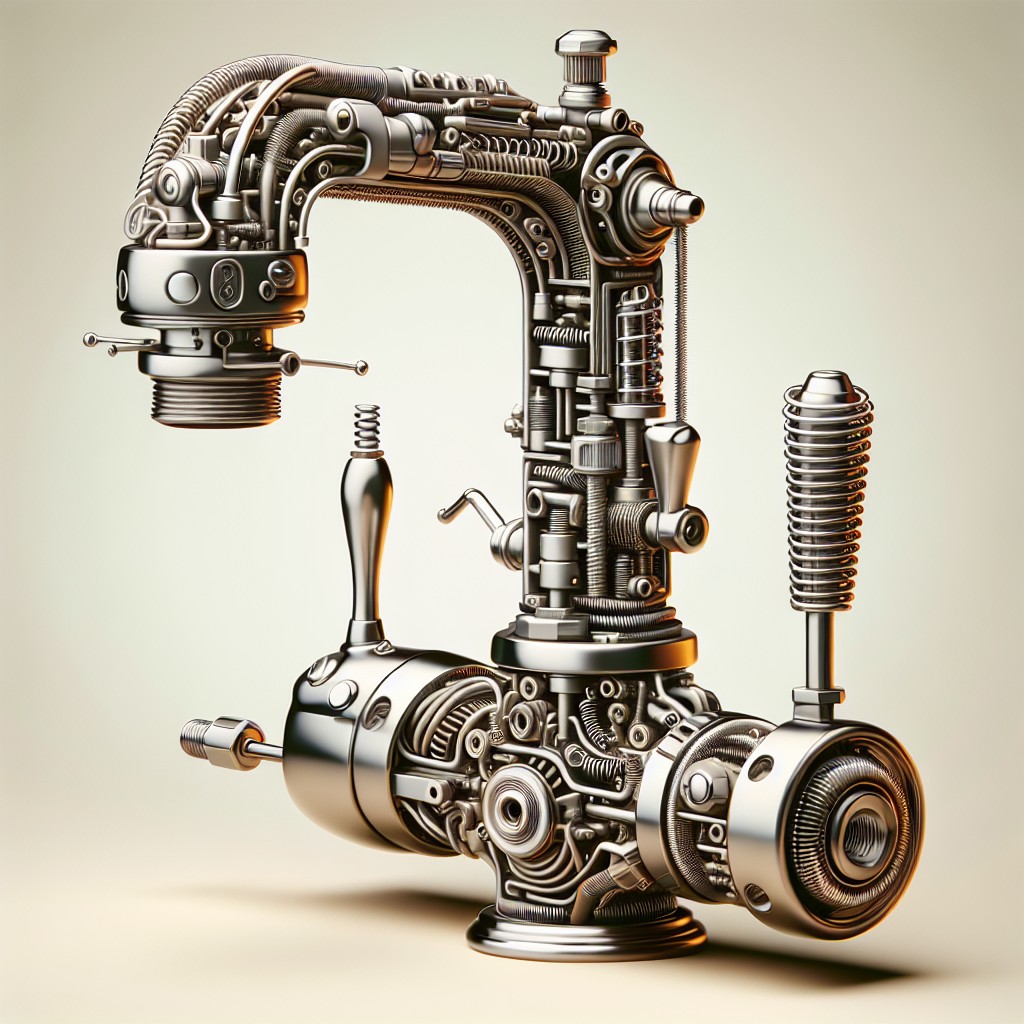
As you begin the process, be prepared to spot some common parts. The valve stem, often made of brass or plastic, is a key part to observe. It’s connected to the handle and opens or closes the valve as the handle is turned.
Next in line is the rubber washer, which is held tightly against the valve seat inside the faucet body. This prevents water flow when the faucet is off. You may also note O-rings, which ensure a watertight seal around the valve stem preventing leaks.
Then, there are the valve seats. Essentially, these are the points where the washer seals against to stop water flow. If they’re damaged, a professional might be needed for repair.
Remember, the cartridge valve might be the key player. In many modern single-handle faucets, this component controls water flow and temperature.
Having identified these important parts, you’ll be better placed to understand possible reasons behind the lack of cold water inflow.
Home Remedies for Unclogging the Cold Water Line in Your Kitchen Faucet
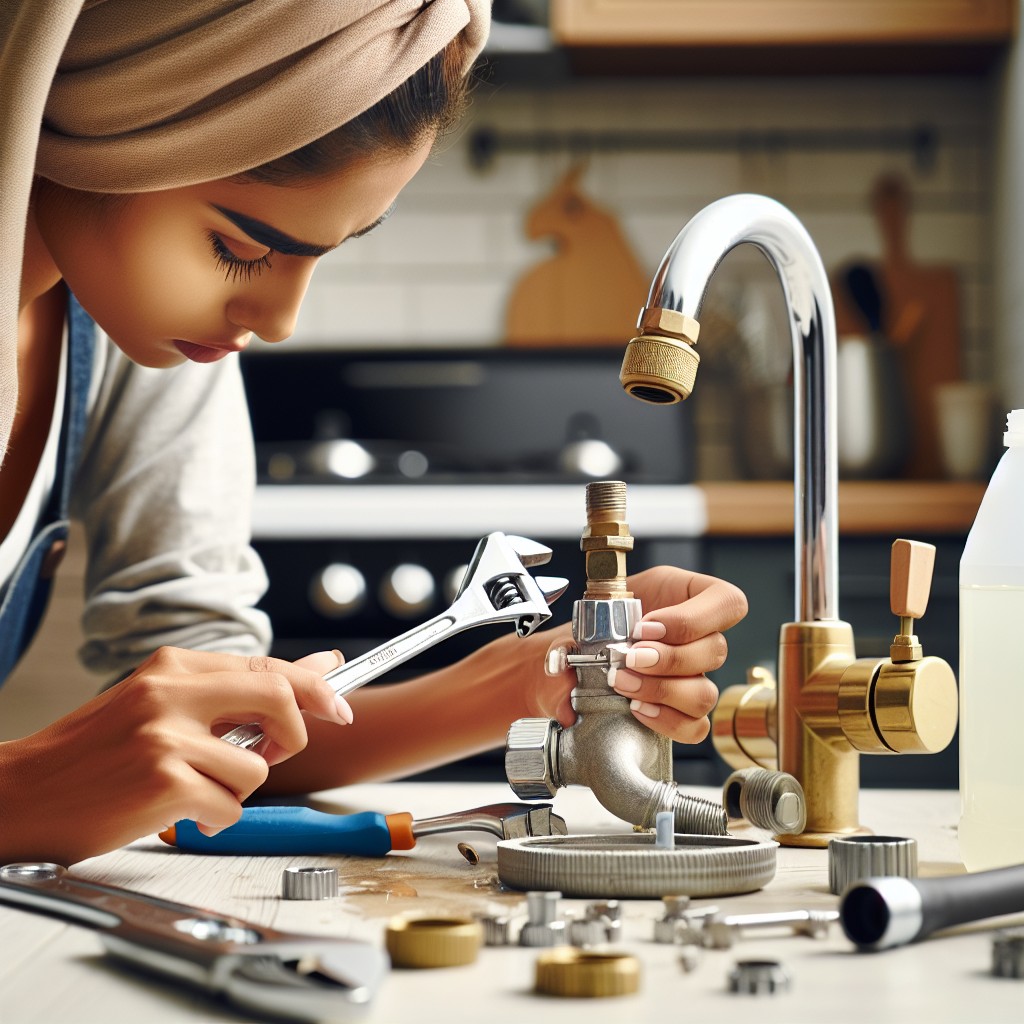
Begin by disconnecting the water line. Grab an adjustable wrench and loosen the tube nut that’s connected to the faucet stem. With the cold water line disconnected, you can freely investigate to identify any blockage.
If you find visual signs of a clog like mineral buildup, a simple home remedy is to soak the element causing the blockage in white vinegar. The acidity of the vinegar effectively breaks down the calcification, restoring the internal diameter of pipes or valves and allowing cold water flow again.
For unseen clogs deeper in your pipework, using a flexible plumber’s snake is recommended. A plumber’s snake can be maneuvered until it contacts the obstruction, dislodging it and clearing the path for water flow. Be careful, though, not to force the snake lest you risk damaging the pipe.
Remember to adequately flush the water line post-unclogging, to rid any dislodged debris. Once the line seems clear, reconnect to the faucet stem, tighten the nut gently and test your success by running the cold water.
This method provides a low-cost solution, however, if the clog persists, a professional plumber should be your next recourse for a more in-depth investigation and solution. These simple tips can help restore your kitchen’s faucet to its optimum working condition thereby ensuring uninterrupted access to both hot and cold water.
Ideas Elsewhere
- https://www.plumbingforums.com/threads/no-cold-water-in-single-handle-kitchen-faucet.7107/
- https://www.forbes.com/home-improvement/plumbing/no-cold-water-from-faucets/
- https://www.forestriverforums.com/forums/f217/no-cold-water-from-kitchen-faucet-59878.html
- https://www.reddit.com/r/HomeImprovement/comments/rugruf/no_cold_water_coming_through_kitchen_faucet/
- https://www.plbg.com/forum/read.php
Continue reading:
